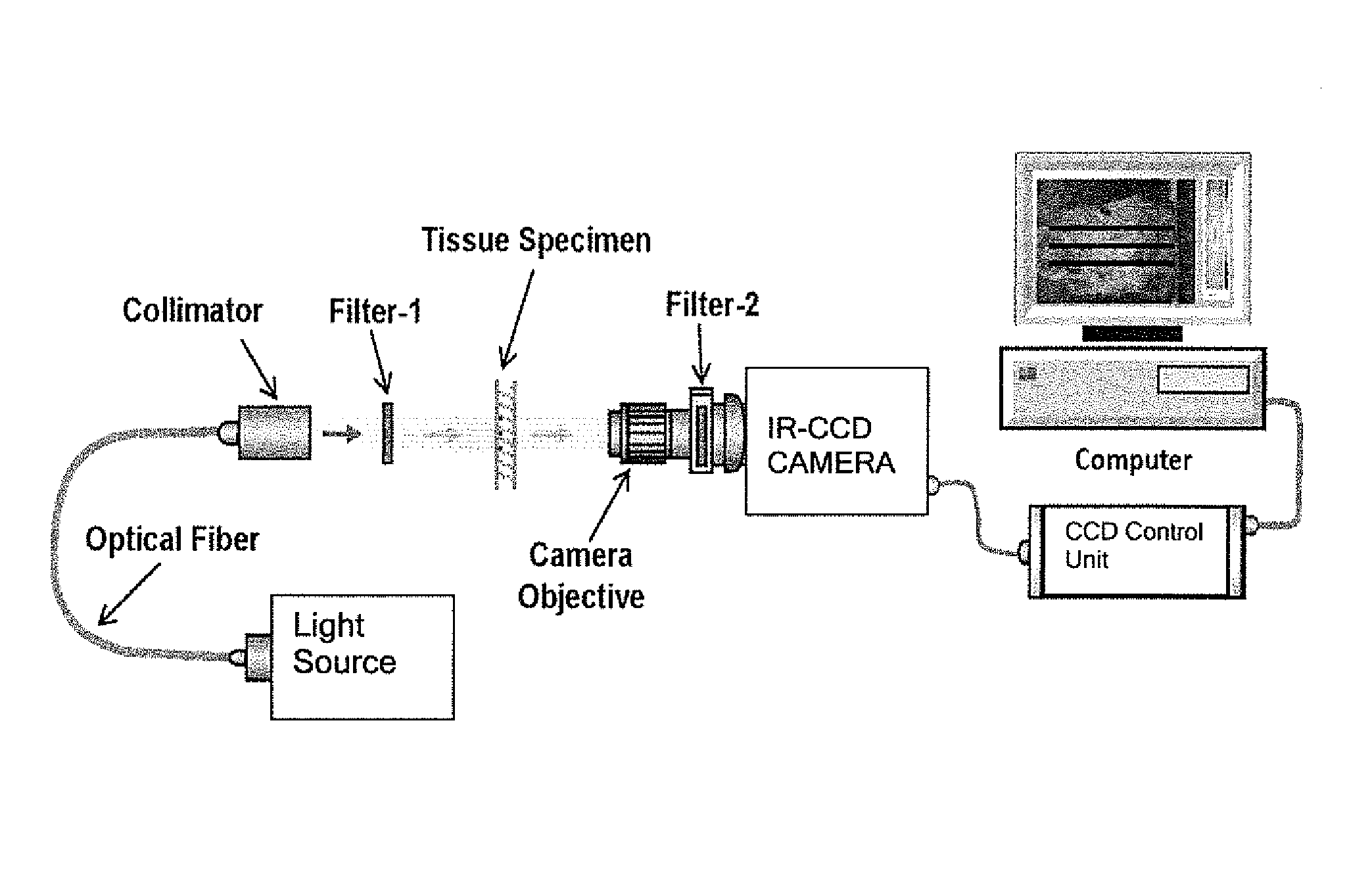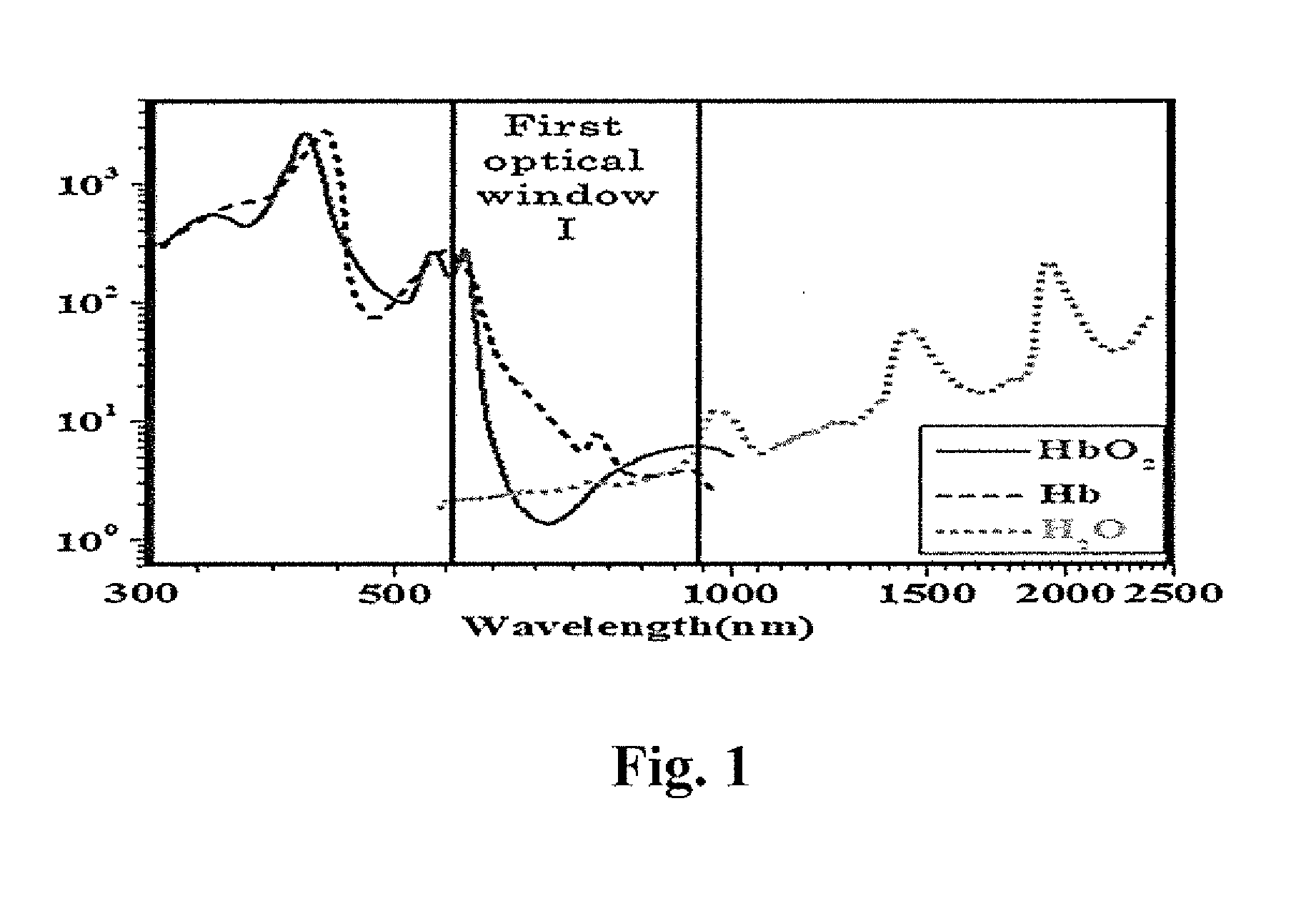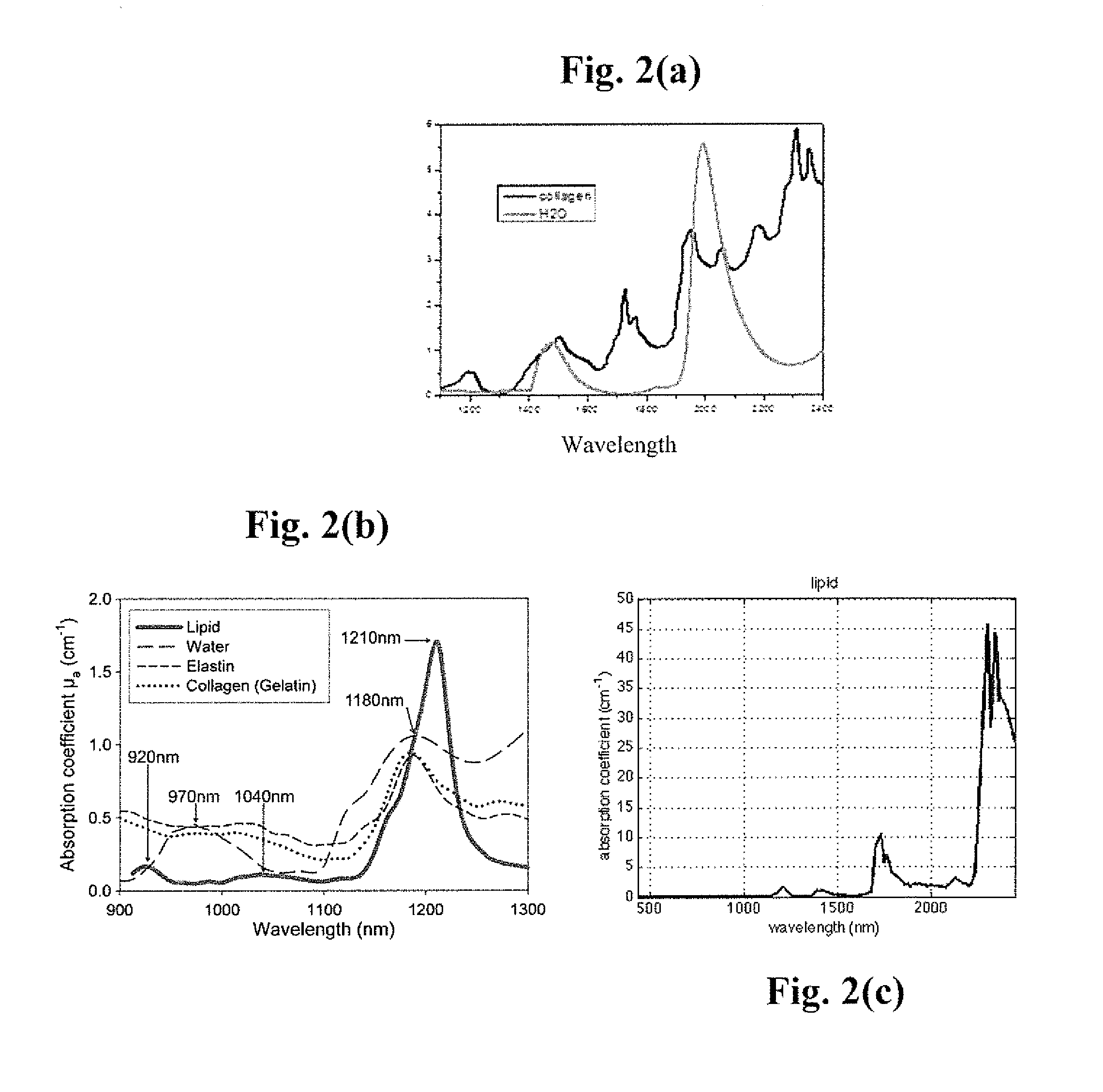Second, third and fourth near-infrared spectral windows for deep optical imaging of tissue with less scattering
- Summary
- Abstract
- Description
- Claims
- Application Information
AI Technical Summary
Benefits of technology
Problems solved by technology
Method used
Image
Examples
Embodiment Construction
1. Introduction
[0015]The patent teaches longer NIR wavelengths for tissue imaging, in particular second (1,100 nm to 1,350 nm), third (1,600 nm to 1,870 nm) and fourth centered about 2200 nm optical windows, for example, arteries, bones, teeth, brain and breast. At these wavelengths tissue becomes more transparent and clearer due to much less scattering of light. Optical attenuation from normal and malignant breast and prostate tissues, and pig brain in the spectral range of 400 to 2,500 nm was measured to show deeper penetration distances. With these NIR optical windows and an InGaAs and InSb camera detector, optical images of chicken tissue overlying black wires were also obtained. The most effective measure in the reduction of mortality and morbidity from cancer and other disease conditions is detection at an early stage of disease by X-ray mammography. The use of these longer NIR wavelengths with new 2D photodetectors and high speed computers may allow for better imaging techniq...
PUM
 Login to View More
Login to View More Abstract
Description
Claims
Application Information
 Login to View More
Login to View More - R&D
- Intellectual Property
- Life Sciences
- Materials
- Tech Scout
- Unparalleled Data Quality
- Higher Quality Content
- 60% Fewer Hallucinations
Browse by: Latest US Patents, China's latest patents, Technical Efficacy Thesaurus, Application Domain, Technology Topic, Popular Technical Reports.
© 2025 PatSnap. All rights reserved.Legal|Privacy policy|Modern Slavery Act Transparency Statement|Sitemap|About US| Contact US: help@patsnap.com



